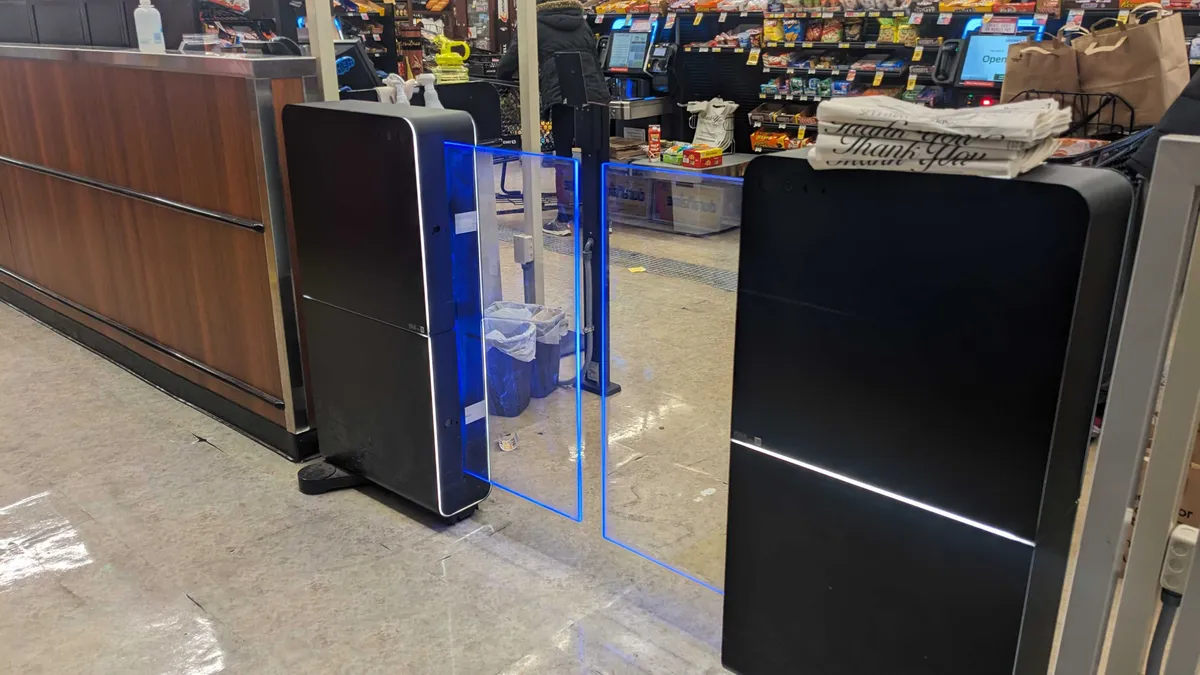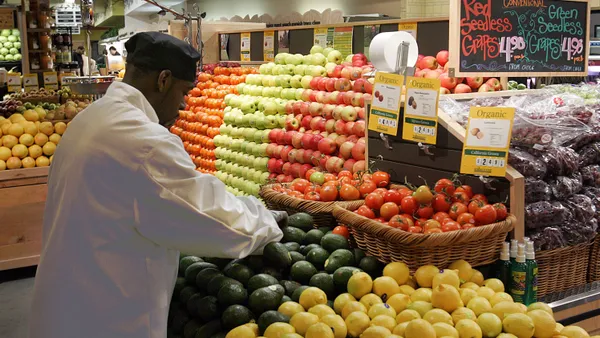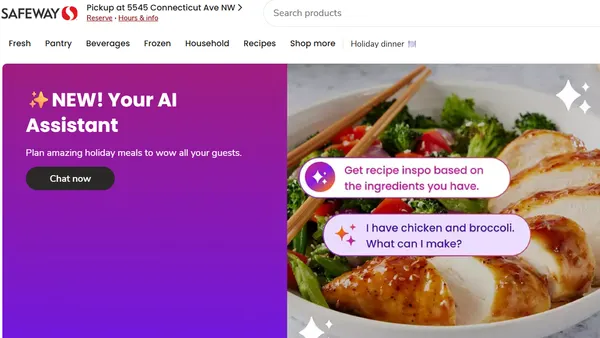Dive Brief:
- Safeway has been adding receipt-scanning gates to the self-checkout areas of more of its stores.
- The gates, which have been in use at several San Francisco area stores since at least last summer, recently arrived at select locations in the Washington, D.C, area, according to local news reports.
- In a statement, Albertsons, Safeway’s parent company, said the gates are part of “long-planned security improvements” aimed at preventing theft.
Dive Insight:
Safeway’s continued rollout of the receipt-scanning gates comes at a time when grocers are grappling with organized retail crime and self-checkout shrink.
Grocery Dive confirmed that the location at 3350 Mission St. in San Francisco; stores in Washington, D.C. at 1747 Columbia Road NW and 1100 4th St. SW; and a store in Wheaton, Maryland, have receipt-scanning gates at their self-checkout areas.
“Recent changes were made at select Safeway stores in Washington D.C. to maintain a safe and welcoming shopping experience for our customers,” Albertsons said in an emailed statement. “Those updates include operational changes to the front end of the stores to deter shoplifting.”
Albertsons did not answer Grocery Dive’s questions about when the gates were installed or how many stores had them.
“Like other local businesses, we are working on ways to curtail escalating theft so we can ensure the wellbeing of our employees and foster a welcoming environment for our customers,” Albertsons said in the statement. “These long-planned security improvements were implemented with those goals in mind.”
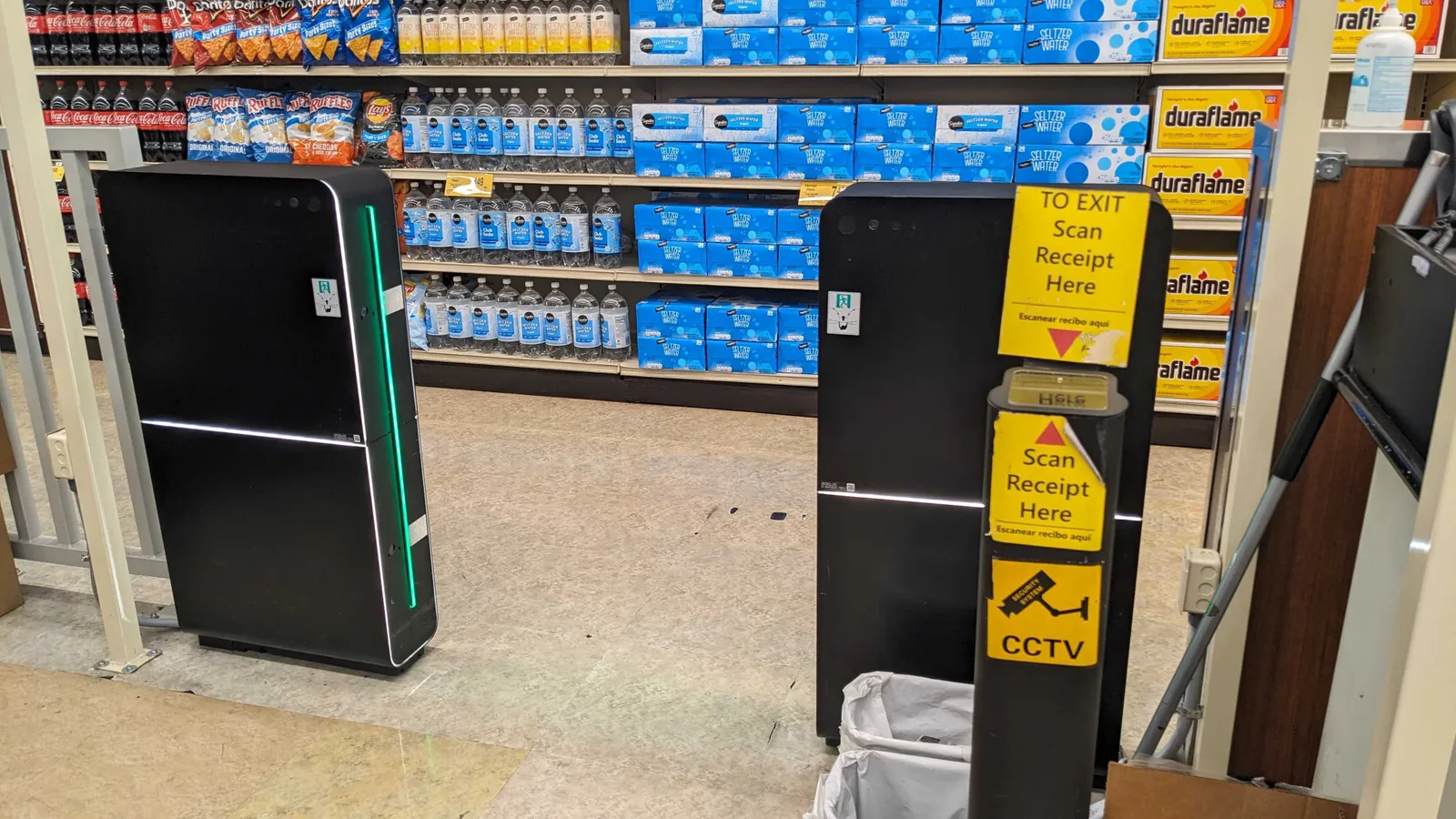
San Francisco TV station ABC7 reported in July that Safeway added the gates to two stores in the city’s Fillmore and the Outer Mission neighborhoods. That same month, the San Francisco Chronicle noted that the same type of gate appeared at the self-checkout area of Safeway’s store in Western Addition. Safeway is reportedly planning to close the Fillmore and Western Addition stores early this year.
In early February, local news outlets began reporting on the addition of the gates at the two stores in Washington, D.C. This month, The Daily Californian reported that a Safeway in Oakland, California, had a receipt scanner at the self-checkout.
“Time will tell” if the receipt-scanning gates will work, and grocers need to be mindful of customer tolerance for theft deterrence efforts as well as measure a solution’s impact on shrink, said Karl Langhorst, an asset protection executive and adjunct criminal justice professor at the University of Cincinnati. Langhorst noted that organized retail crime is a larger concern than shoplifting for grocers.
“The vast majority of shoppers are honest and you can't ever put technology or any other asset protection solutions in that will drive them away from your store. But at the same time, you can't continue to have losses so great that they potentially drive you out of business,” said Langhorst, who was Kroger’s senior director of loss prevention for nearly nine years.
Because business closures can hurt communities and media reports have spotlighted a narrative of increasing crime at retailers, a lot of customers “will put up with, to a certain extent, the innovative ideas that are being put in place, such as the gates,” to try to deter organized retail crime, Langhorst said.
Safeway has tried a variety of theft deterrence methods in both metropolitan areas. For example, the Wheaton, Maryland, store has automatic gates at the entrance, products like teeth whitening strips and allergy medicine in locked cases, in-aisle security cameras and on-shelf devices that customers have to turn to release products. The store at 3350 Mission St. last week had a heavy security guard presence and several cases with locked-up goods.
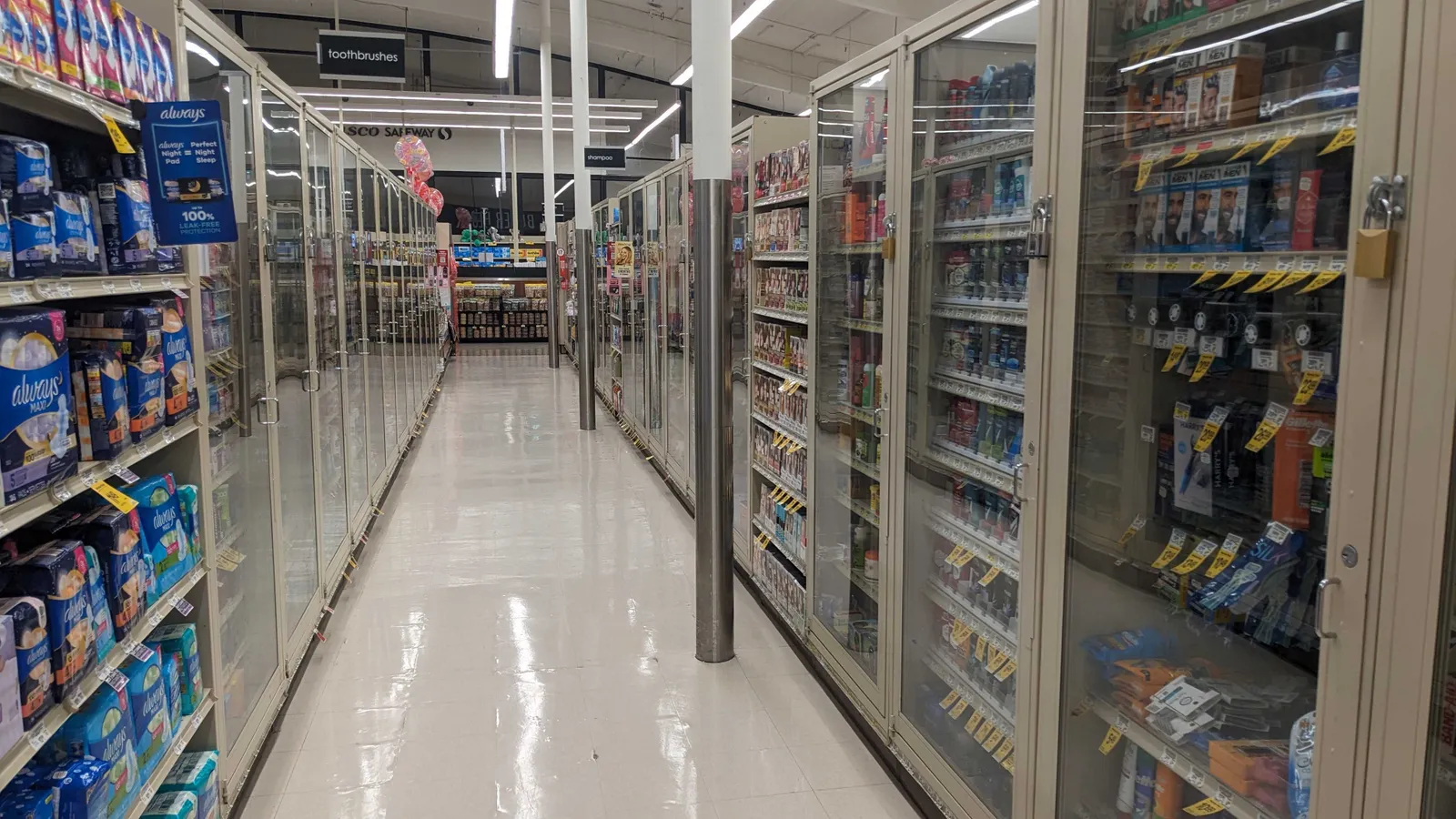
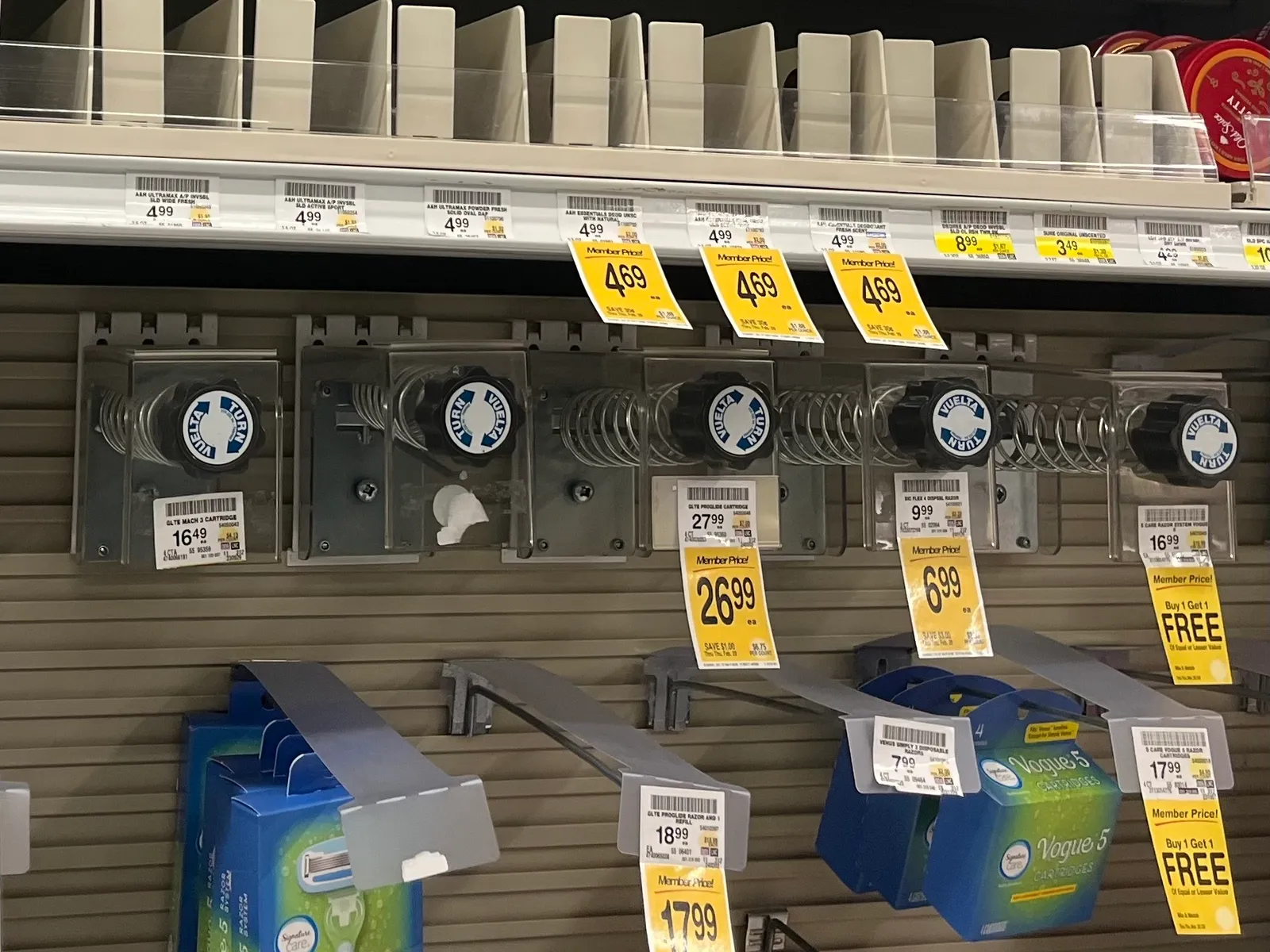
The San Francisco Chronicle noted that the Western Addition store blasted classical music at night to deter loitering in the parking lot. CBS reported that Safeway has used metal gates to stop people from leaving through closed registers and put long metal poles on shopping carts to prevent people from running out with the carts.
Langhorst said it’s common for retailers to take a “layered” approach to asset protection.
Safeway’s rollout of the gates is similar to efforts by grocers in England, including Sainsbury’s requiring self-checkout customers to scan receipts to exit at some stores. In 2022, a Tesco Express store reportedly started requiring customers to scan a barcode to leave.
While visual barriers can act as a deterrent, thieves can evolve their methodology as they better understand a retailer’s loss prevention efforts: “Retailers have to continue to look for new ways to address the issues they are faced with,” Langhorst said.
Edwin Lopez and Chris Casey contributed reporting.


